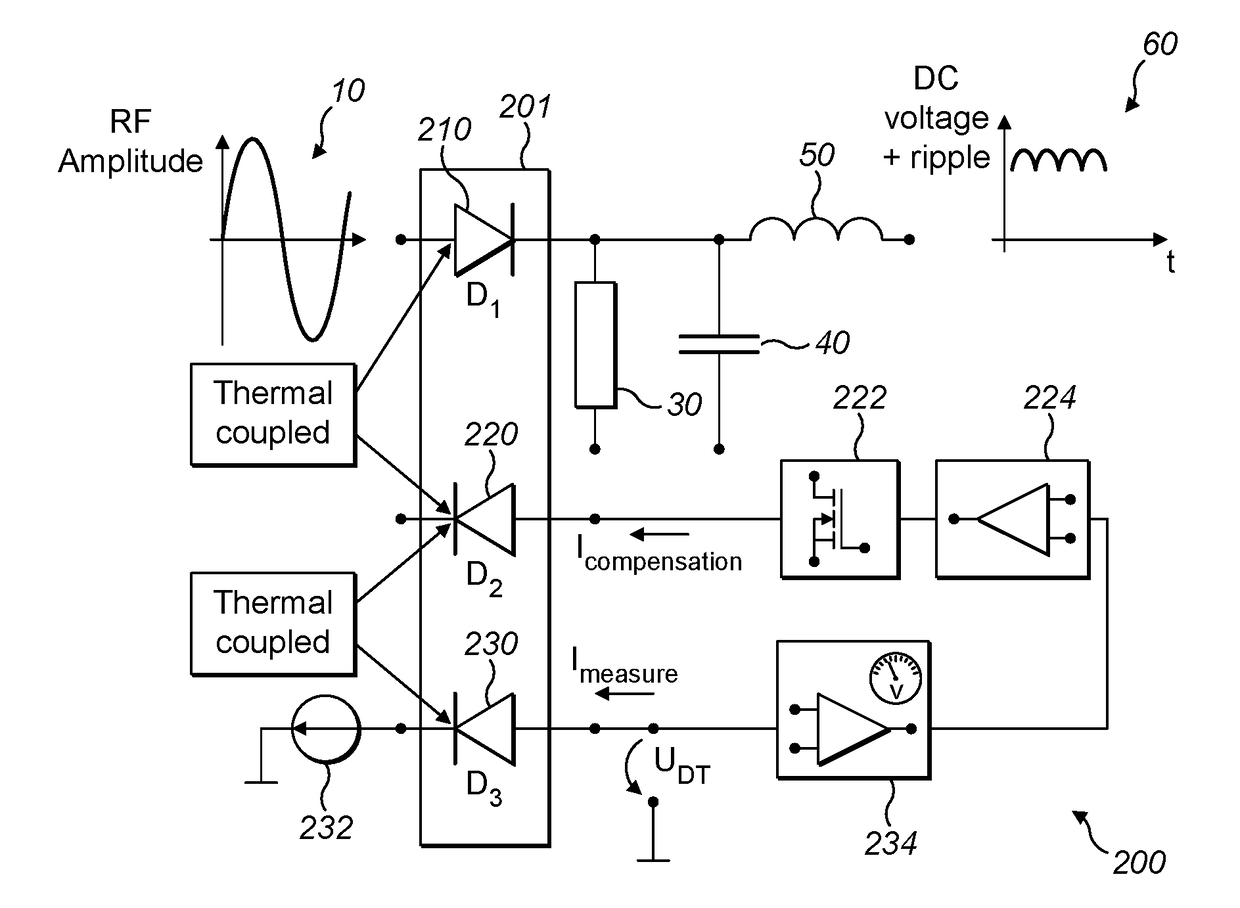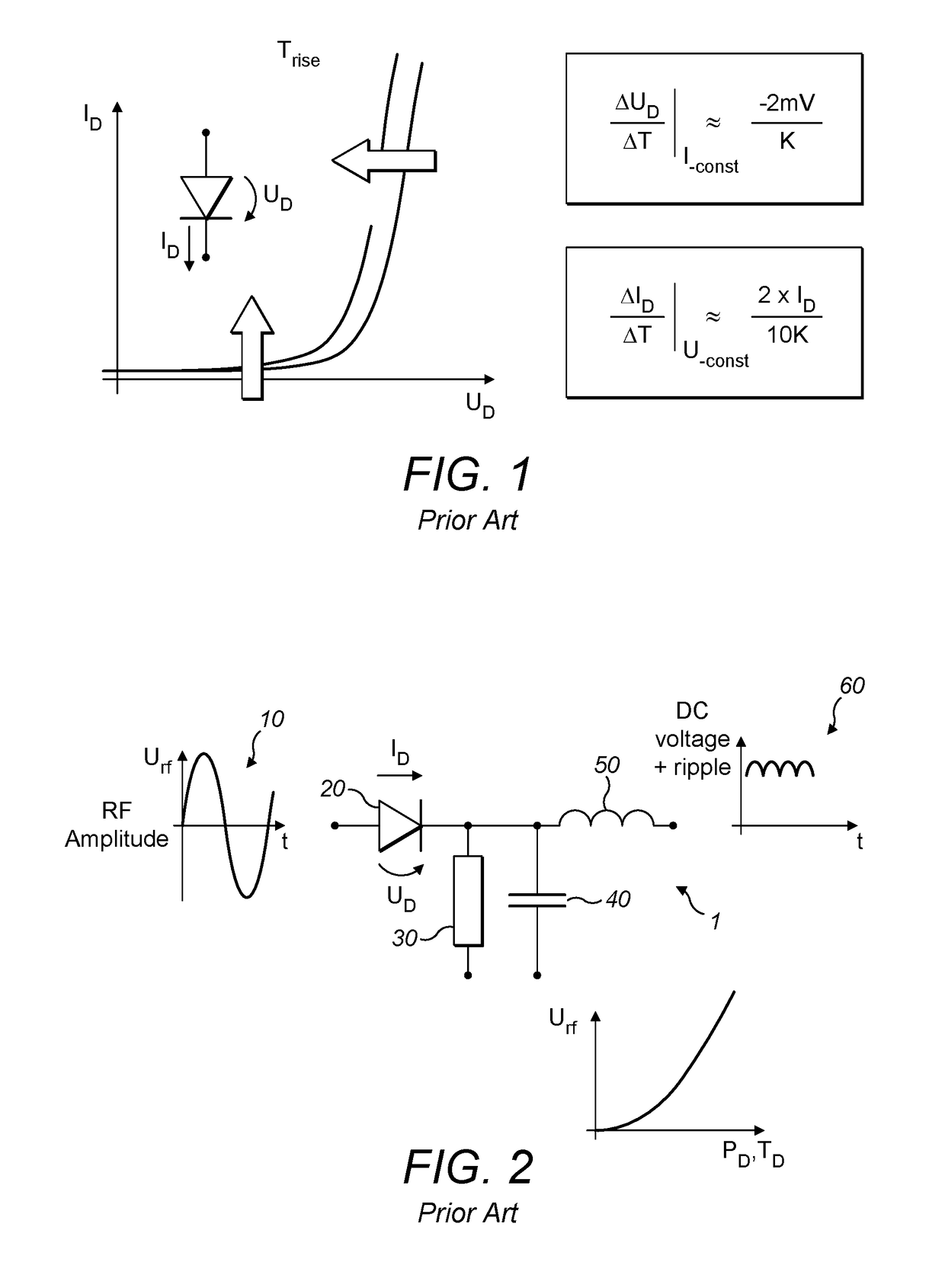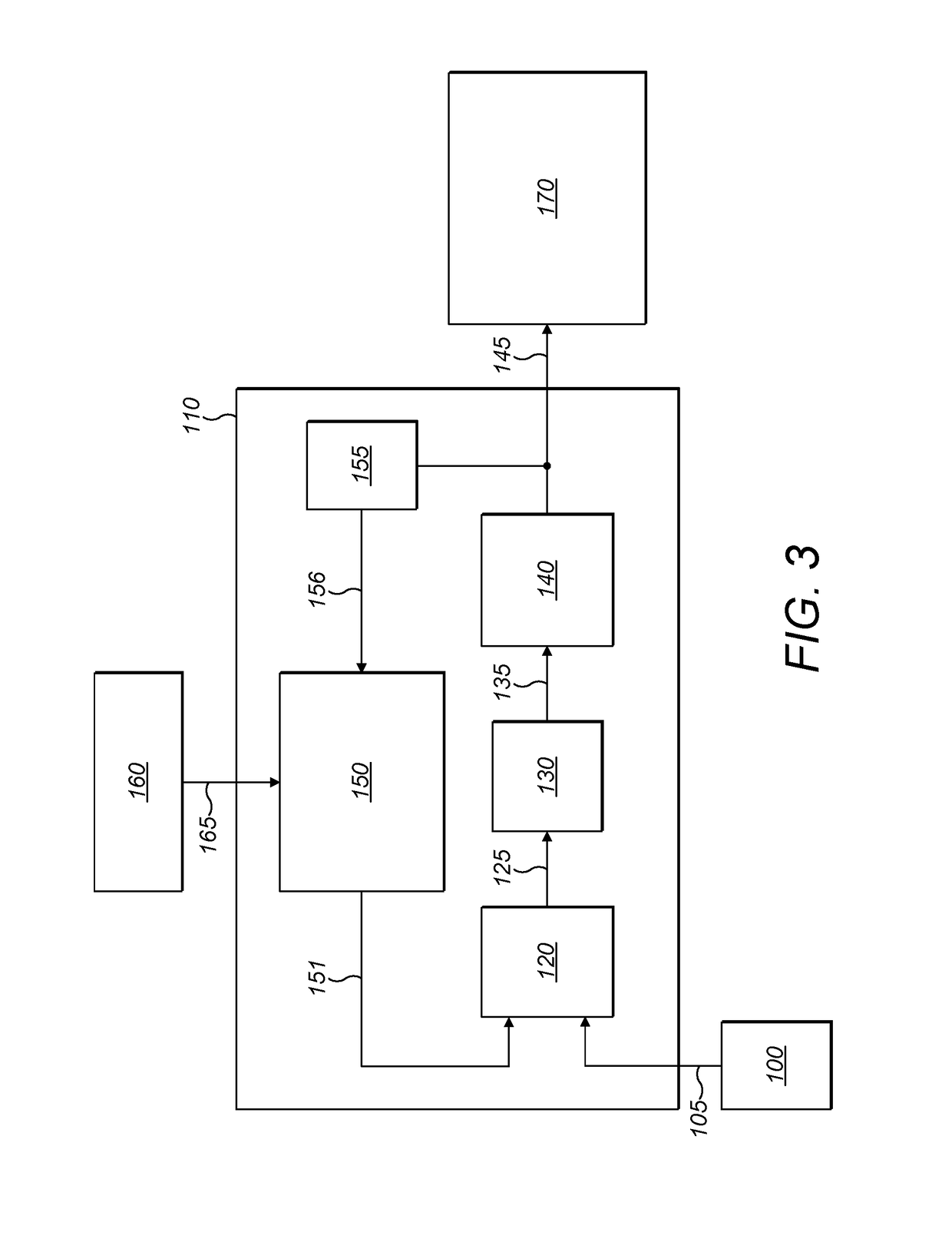Temperature-compensated electronic apparatus
a technology of electronic equipment and compensation, applied in the direction of particle separator tube details, program control, instruments, etc., can solve the problems of inaccuracy of measurement and loss of ions, power loss, and temperature increase of semiconductor pn-junction or metal-semiconductor schottky junction of the diode, so as to improve heat spreading
- Summary
- Abstract
- Description
- Claims
- Application Information
AI Technical Summary
Benefits of technology
Problems solved by technology
Method used
Image
Examples
second embodiment
[0061]Referring to FIG. 7, there is illustrated an RF detector 300 in accordance with a Where components common with those of the RF detector 1 of FIG. 1 are shown, the same reference numerals have been used. The RF detector 300 comprises: a software controller 310; a diode 20; a resistor 30; a capacitor 40; and an inductor 50. The diode 20, resistor 30, capacitor 40 and inductor 50 operate in the same way as described above with respect to FIG. 1. The software controller 310 controls the way that signals are applied to the diode 20 for rectification and therefore the power dissipated in the diode 20. In principle, the software controller 310 controls the power dissipated in diode 20 to average (in an arithmetic sense) a fixed and constant level over time. In other words, the mean power dissipated over time remains fixed. This is achieved by dissipating additional power in the diode during a dummy time period at regular intervals and will now be illustrated using examples.
[0062]Ref...
third embodiment
[0069]Referring to FIG. 11, there is depicted a block diagram of a thermal controller for an RF detector in accordance with a The thermal controller comprises: a temperature sensor 610; a temperature control circuit 620; a voltage divider 630; a heating transistor 640; and a constant current source 650. Thermal shielding 660 is ideally provided to couple the heating transistor 640 and the temperature sensor 610.
[0070]The temperature sensor 610 measures the temperature of the circuit and provides a temperature signal 615 indicative of this measurement to the temperature control circuit 620. The temperature control circuit 620 is configured to generate a control signal 625, which controls the operation of the heating transistor 640 accordingly. The temperature control circuit 620 achieves this by comparing the temperature signal 615 with a set temperature level 635, which is indicative of a desired stable operating temperature and is set by the voltage divider 630 and may therefore b...
PUM
 Login to View More
Login to View More Abstract
Description
Claims
Application Information
 Login to View More
Login to View More - R&D
- Intellectual Property
- Life Sciences
- Materials
- Tech Scout
- Unparalleled Data Quality
- Higher Quality Content
- 60% Fewer Hallucinations
Browse by: Latest US Patents, China's latest patents, Technical Efficacy Thesaurus, Application Domain, Technology Topic, Popular Technical Reports.
© 2025 PatSnap. All rights reserved.Legal|Privacy policy|Modern Slavery Act Transparency Statement|Sitemap|About US| Contact US: help@patsnap.com



